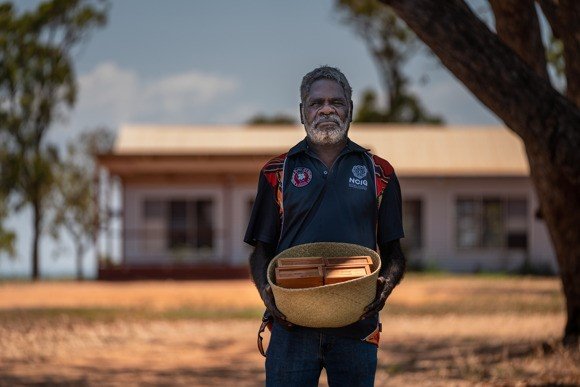The Australian National University (ANU) will today return over 200 blood samples to the Galiwin’ku community of Elcho Island in East Arnhem Land.
The blood, or manggu in the Yolgnu language, comes from local Indigenous Australians and was collected after a typhoid outbreak on Elcho Island in 1968 and 1969. Many of the original study participants whose blood was sampled have since passed away.
The samples form part of the 7,000-strong collection in the ANU John Curtin School of Medical Research, which has been under the custodianship of the Indigenous-majority Governance Board of the National Centre for Indigenous Genomics (NCIG).
Under a new management plan, the blood samples of those who have passed away will be repatriated in a special burial ceremony, and commemorated at a formal memorial site.
The people of Galiwin’ku have also given permission for the samples from deceased family to be sequenced, to allow ongoing medical and health research.
Blood samples from those who are still alive, around 400, will be sequenced and then disposed of in Canberra. The DNA information will be added to NCIG’s genome biobank.
NCIG Director Professor Simon Easteal said the Galiwin’ku samples are the largest set from a single community and have the most detailed information about the original study participants.
“In 2018, we started consulting with the people of Galiwin’ku to decide the future of the blood samples, which have been housed at ANU for 50 years,” Professor Easteal said. “The samples have been pivotal in advancing health and medical discoveries that have improved the lives of all Indigenous Australians. But Canberra is not their home – and for five decades they have been disconnected from their families and their land. At ANU, we are firmly committed to long-lasting reconciliation with Indigenous Australians in meaningful ways that are driven by their voices, their priorities and their perspectives. Together we have established a plan for the future use and management of these important blood samples that will see them finally come home, but which will also deliver important health and medical benefits for the people of Galiwin’ku and all Indigenous Australians.”
The joint management plan was developed in partnership with the Yalu Marnggithinyaraw Indigenous Corporation (Yalu), a representative community body.
“Yalu Aboriginal Corporation were very happy to be able to work with NCIG and the Galiwin’ku community on the repatriation of the manggu samples,” said Yalu Chairperson Ross Mandi. “This is an important day for us and we are looking forward to welcoming home our ancestors. This is a historic moment for Galiwin’ku.”
Mrs Azure Hermes, NCIG’s Indigenous Engagement Coordinator, has led the Galiwin’ku consultation and repatriation process.
“It is hard to imagine a more powerful symbol of reconciliation,” Mrs Hermes said. “People regard the material in the samples as the embodiment of family members. The culturally right process is for the remains of those who have passed away to be buried near their home for their families to watch over. The Galiwin’ku people wanted to show respect to their deceased ones. ANU wanted to show respect for the wishes of those faced with difficult choices. The solution – sequencing and repatriation – is a significant gift from each to the other. With today’s repatriation, the samples will continue to contribute to Indigenous medical research and discovery that aims to benefit current and future generations. And the samples will be returned to Country, reconciling their physical and spiritual dislocation.”
